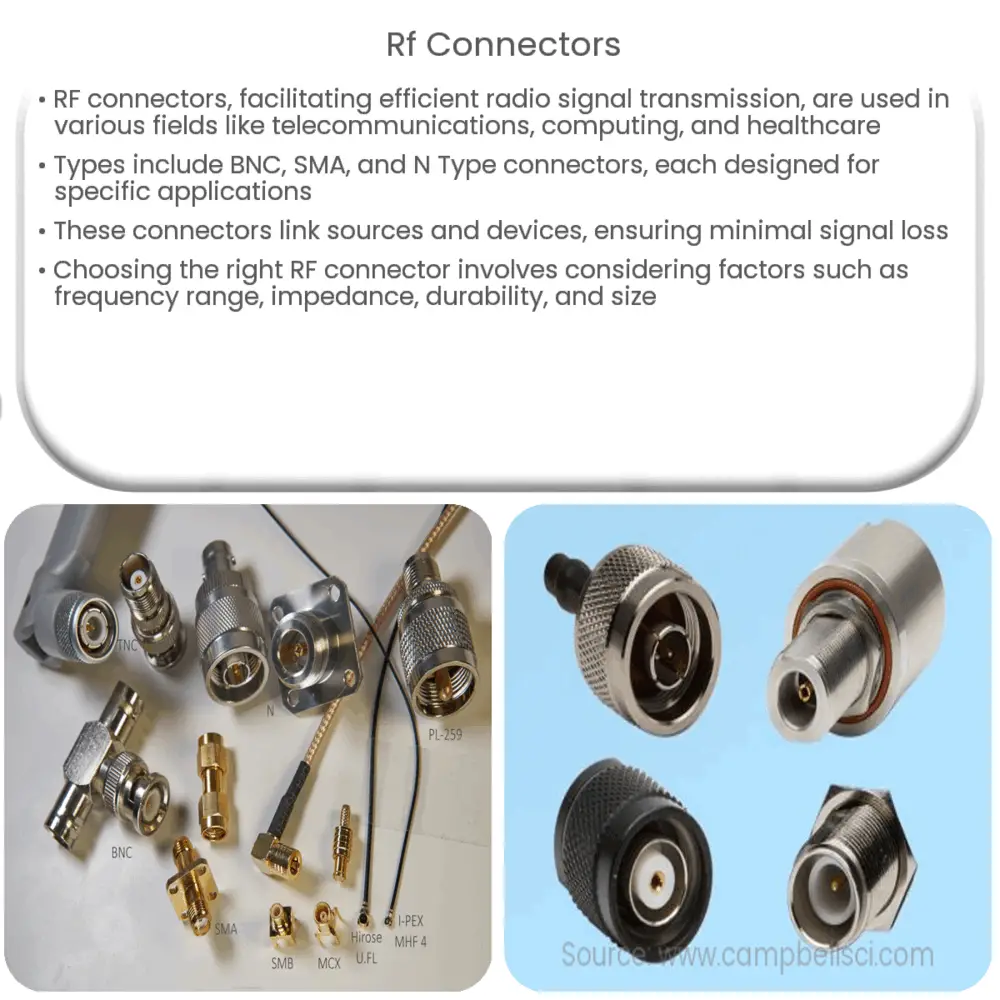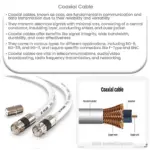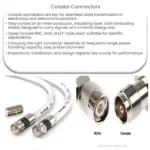Explore the world of RF connectors, their types, functions, and applications across various fields, and guidelines for selecting the right one.

Understanding RF Connectors
Radio frequency (RF) connectors are essential components used in the transmission of radio signals. They offer an interface for different types of coaxial cables, which play a vital role in a vast array of applications, including radio communications, television broadcasting, and data transmission networks. To fully understand the significance and diversity of RF connectors, we must delve into their types, functions, and applications.
Types of RF Connectors
- BNC: The Bayonet Neill-Concelman, or BNC connector, is one of the most widely used RF connectors. It was designed for military applications, but has since been adopted in video and RF applications to 2 GHz.
- SMA: SubMiniature version A, or SMA connectors, are semi-precision coaxial RF connectors developed in the 1960s. They are most commonly used in microwave systems, hand-held radio and mobile telephone antennas, and more recently in WiFi antenna systems.
- N Type: Named after its inventor, Paul Neill of Bell Labs, the N type connector is a weatherproof, medium to large size RF connector used to join coaxial cables. It was originally designed for military systems, but today is used in applications up to 11 GHz.
Function of RF Connectors
RF connectors work as an integral part of a cable system, where they act as the connecting ‘link’ between sources and devices. They provide a seamless route for the RF signal to travel, ensuring there is minimal signal loss, reflections, or voltage standing wave ratio (VSWR) issues. RF connectors are designed to maintain the coaxial form of the cable to ensure that the signal is transmitted efficiently.
Application of RF Connectors
RF connectors find applications across a variety of fields due to their ability to efficiently transmit signals. Here are some common use-cases:
- Telecommunications: RF connectors are used in the telecommunications industry to connect coaxial cables to antennas, receivers, transmitters, and other radio equipment.
- Computing: In the computing world, RF connectors play a role in networking by facilitating WiFi connectivity.
- Medical equipment: In the medical field, RF connectors are found in a wide range of devices, including MRI machines, patient monitoring systems, and surgical equipment.
Selecting the Right RF Connector
Selecting the correct RF connector for a specific application is not a task to be taken lightly. A few factors that should be considered while making a choice include:
- Frequency: The connector should be able to handle the frequency range of the application. For example, SMA connectors are preferred for applications up to 18 GHz, while N Type connectors are more suitable for frequencies up to 11 GHz.
- Impedance: It is essential that the connector’s impedance matches that of the cable system to avoid signal reflections. Typically, RF connectors are designed to have an impedance of 50 or 75 Ohms.
- Durability: The durability of the connector is crucial, particularly in conditions where it may be exposed to repeated connect-disconnect cycles or harsh environments.
- Size: Depending on the space available for the application, the size of the RF connector can play a significant role in the selection process.
Conclusion
In conclusion, RF connectors are vital components that facilitate the efficient transmission of radio signals. They find broad usage across diverse fields including telecommunications, computing, and healthcare. With a plethora of types available, each offering different capabilities, understanding their specific attributes is crucial in making an informed choice. Whether it’s a BNC connector for a video application or an SMA connector for a microwave system, each RF connector plays a unique and critical role in our interconnected world. Ultimately, the selection of an RF connector should be guided by the specific requirements of its intended application, taking into account factors such as frequency, impedance, durability, and size.




